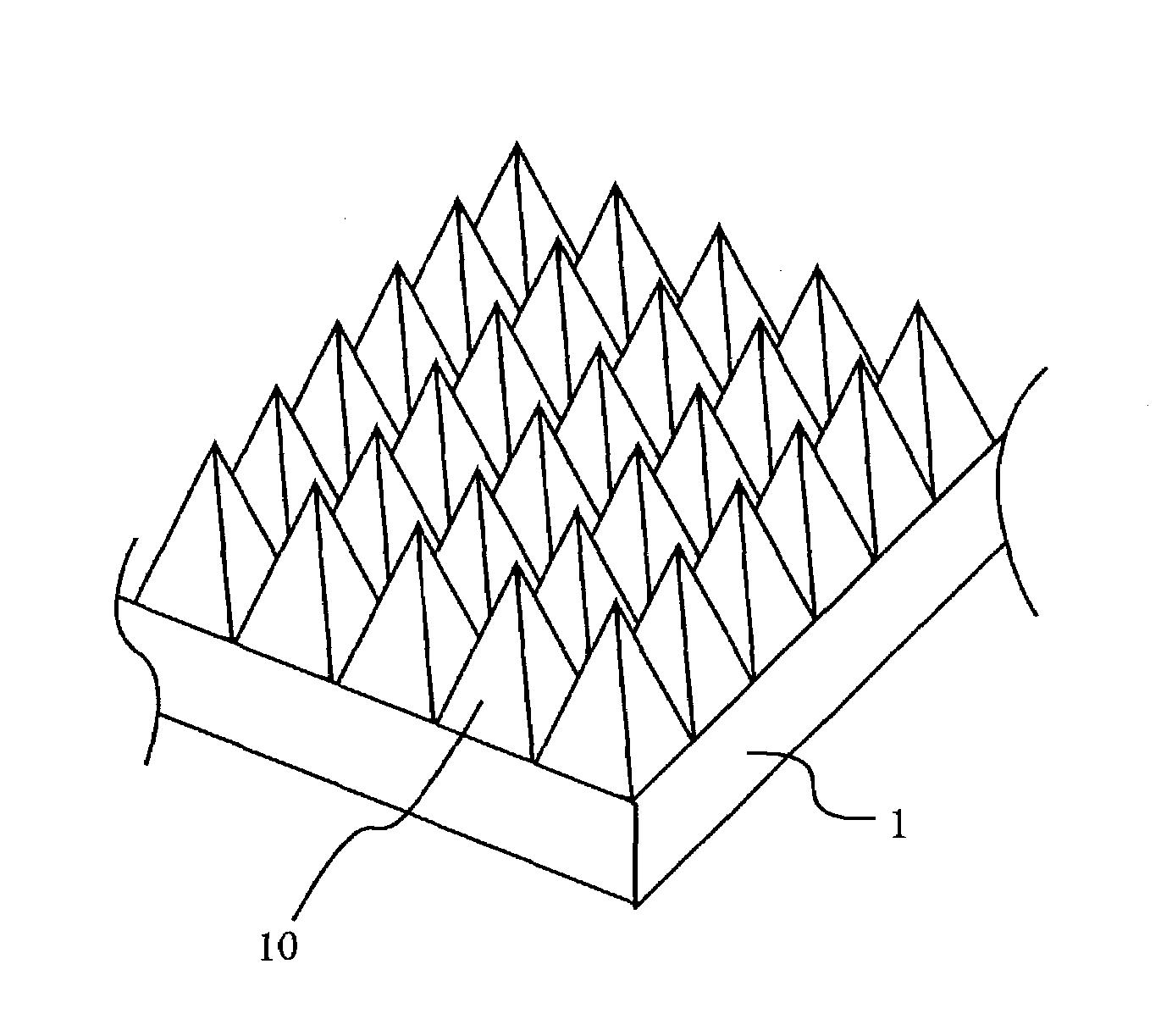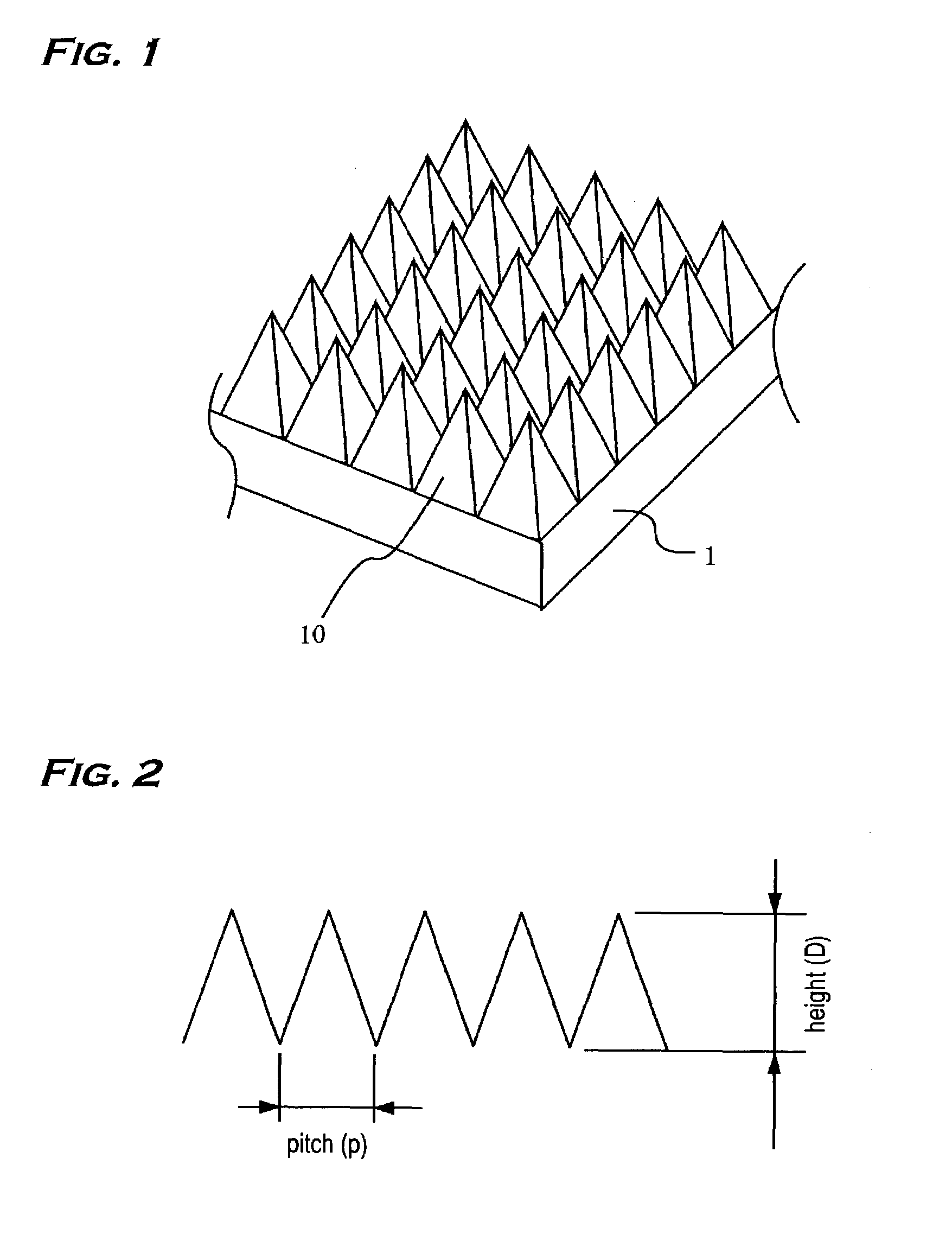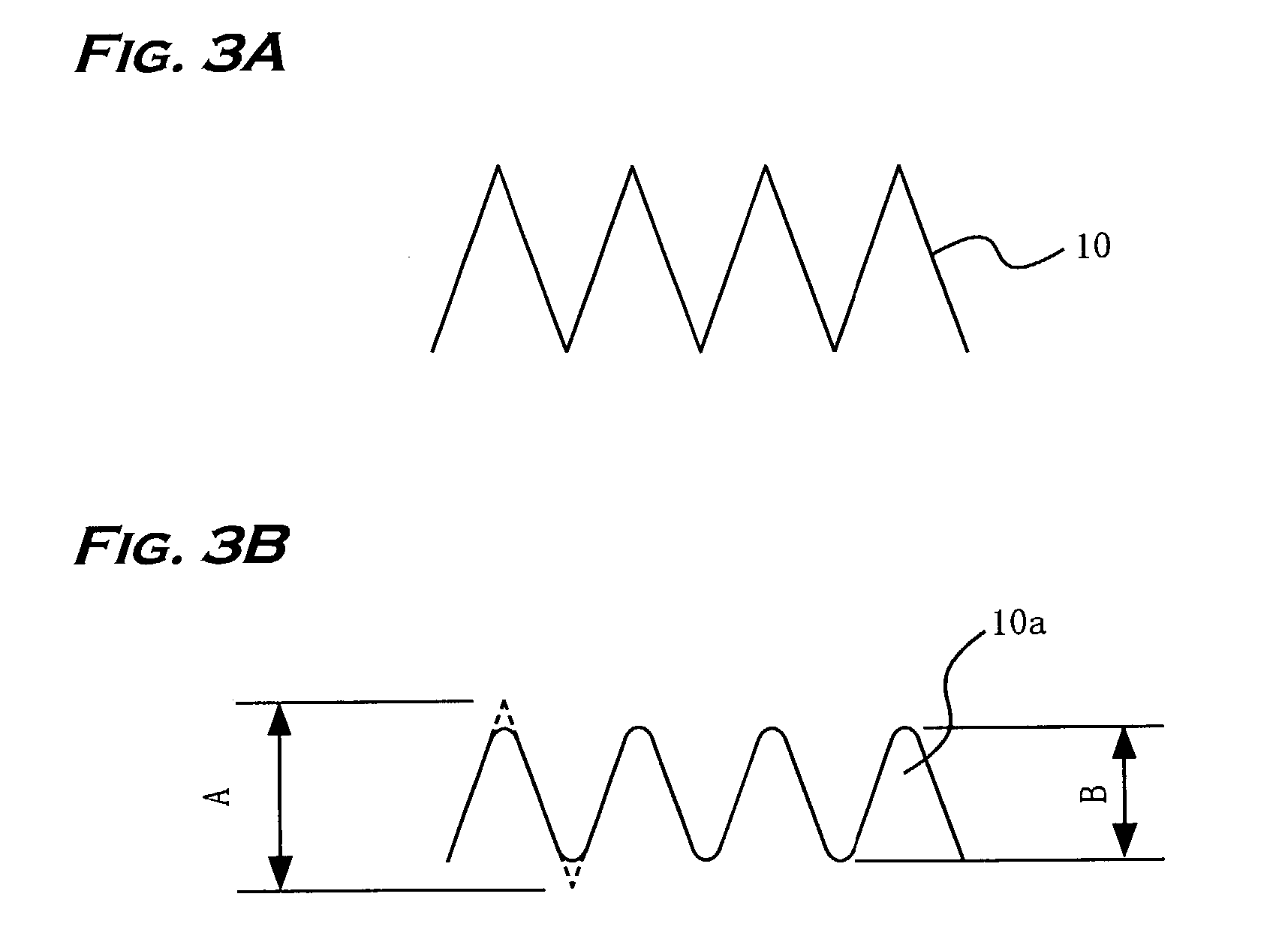Antireflective member and electronic equipment using same
a technology of anti-reflective elements and electronic equipment, applied in the field of anti-reflective elements, can solve the problems of reducing yield, increasing costs, and difficult to obtain the anti-reflective effect of light having a wavelength range, and achieve the effect of stable spectral characteristics
- Summary
- Abstract
- Description
- Claims
- Application Information
AI Technical Summary
Benefits of technology
Problems solved by technology
Method used
Image
Examples
Embodiment Construction
[0046]Description of an embodiment according to the present invention is now made with reference to drawings. FIG. 1 is a perspective view showing a simplified shape of a surface of an antireflective member using this invention. FIG. 2 is a schematic view showing a cross-sectional shape of the pattern.
[0047]As shown in FIG. 1, a transparent substrate 1 comprises a roughened surface having a continuous pattern in which protrusions 10 in a fine pyramidal shape are continuously formed. Although the protrusion 10 takes the shape of pyramid in this embodiment, the present invention may employ protrusions in the shape of six-sided pyramid or in the shape of cone.
[0048]An aspect ratio is defined as a ratio D / p; a height D of the pattern to a pitch p of the pattern, shown in FIG. 2.
[0049]FIG. 4 shows a simulation result of spectral characteristics when changing the aspect ratio of the pyramid pattern. Eight kinds of pyramid pattern having the aspect ratio respectively of 0.6, 0.8, 0.9, 1, 1...
PUM
| Property | Measurement | Unit |
|---|---|---|
| transparent | aaaaa | aaaaa |
| aspect ratio | aaaaa | aaaaa |
| reflectance | aaaaa | aaaaa |
Abstract
Description
Claims
Application Information
 Login to View More
Login to View More - R&D
- Intellectual Property
- Life Sciences
- Materials
- Tech Scout
- Unparalleled Data Quality
- Higher Quality Content
- 60% Fewer Hallucinations
Browse by: Latest US Patents, China's latest patents, Technical Efficacy Thesaurus, Application Domain, Technology Topic, Popular Technical Reports.
© 2025 PatSnap. All rights reserved.Legal|Privacy policy|Modern Slavery Act Transparency Statement|Sitemap|About US| Contact US: help@patsnap.com



